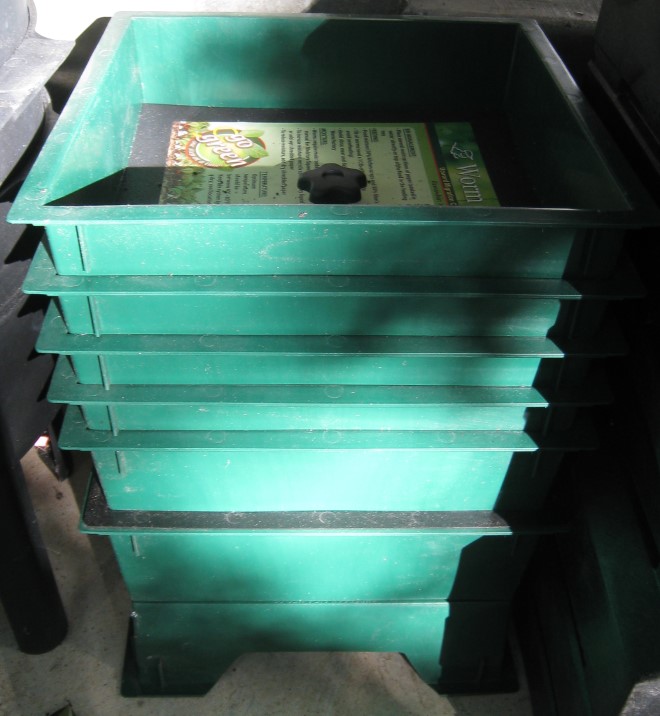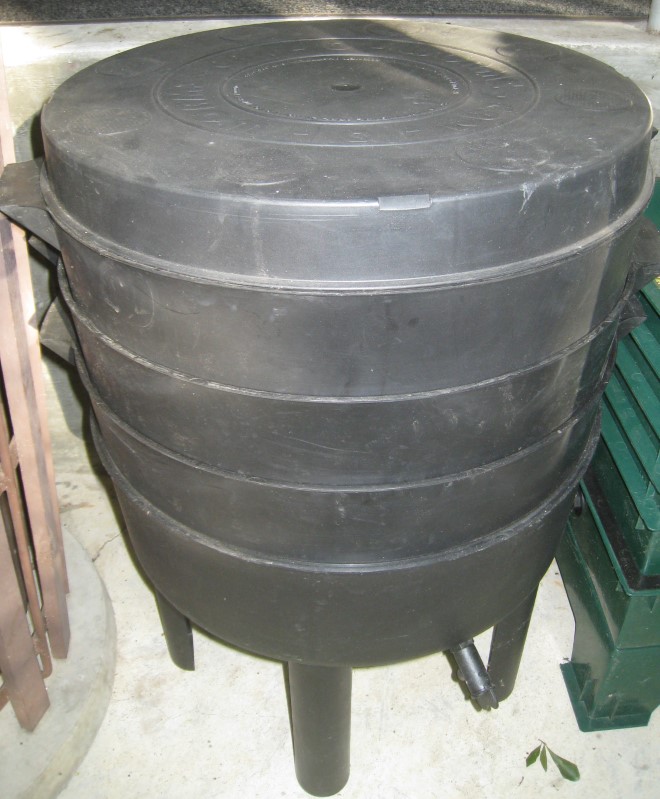Vermicomposting
Vermicomposting, or composting using worms, is also practiced at the Compost Cooperative and Gardens. We currently have three vermicomposters. Vermicomposting is different than traditional composting in many ways.
- While traditional composting uses primarily microorganisms, vermicomposting relies on worms consuming organic mattter.
- Vermicomposting are generally fed only food waste, paper, and more degradable materials. Yard waste should not be fed to vermicomposters as the worms tend not to eat this material.
- Vermicomposters are generally not mixed. Rather, the worms migrate to the fresh material.
- Vermicomposting does not heat up. In fact, high temperatures can kill the worm.
- While common earthworms may be found in a traditional composter, vermicomposting uses different species of earthworms. Red wigglers or nightcrawlers are commonly used because they are better adapted to smaller environments with a high amount of organic material.
- The end product is worm castings rather than compost. These castings are the excretion from the worms and look like little brown balls. Worm castings are claimed to have many benefits over traditional compost, including increased nutrient availability and increased biological interactions with plants’ root systems.
Vermicomposters available:
Our two vermicomposters are comprised of stacking trays with a large screen on the bottom of each tray. The process is started by placing wet paper and food scraps along with the worms in the bottom tray. As this tray fills and the worms eat the material, the next tray is placed on top of the filled tray and material is added to the new tray. The worms will migrate up through the screen in the bottom of the tray, leaving their castings behind in the bottom tray. The bottom tray of castings is removed for use in the garden, and the process is repeated indefinitely. As long as the composter is kept healthy, new worms will not have to be added because a thriving and reproducing community of worms will exist in the compost. The vermicomposters also have a tap at the bottom to remove and use liquid worm tea that is produced from the compost.
Worm Factory

Can-o-worms

What is Vermicomposting? Infographic

